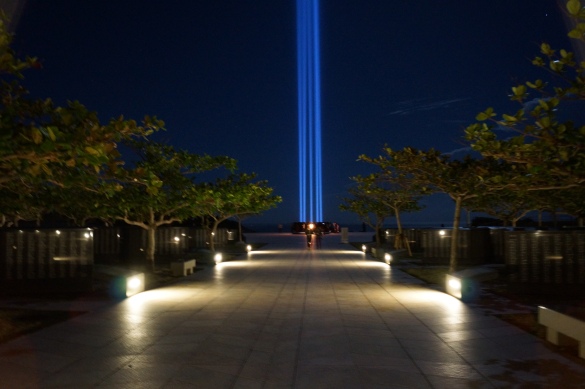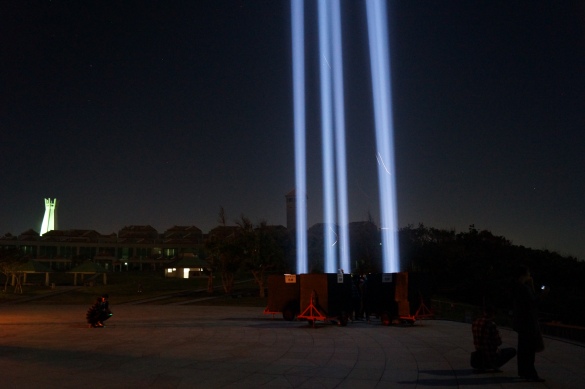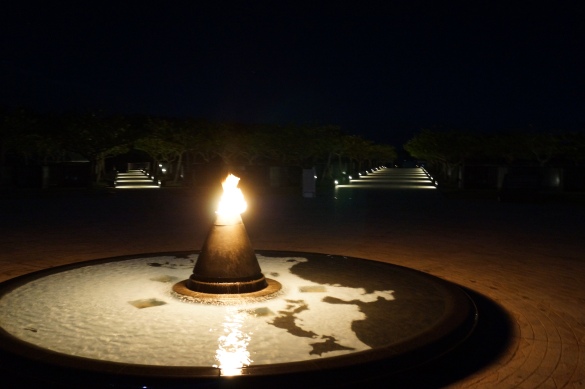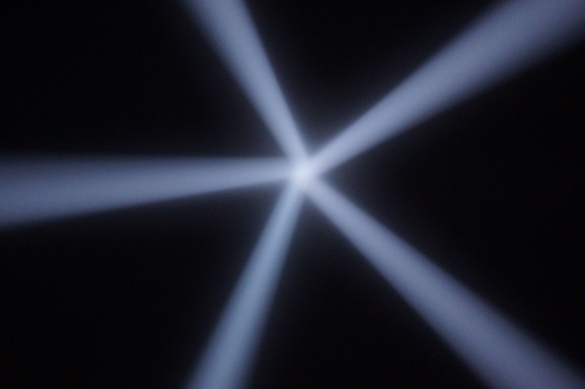Celebrating the ending of one year and coming of the next is done by peoples all over the world each year. In the United States we tend to celebrate by gathering with family and friends, watching the ball drop at Time Square and kissing the one we love at midnight. However, celebrating in that way can be a bit difficult for those of us living in Okinawa because we ring in the new year before our family and friend in the US. That being said why not try some of Japan’s traditions for new years (or お正月 “oshogatsu”) this year?
First let’s start with food. Every good holiday has some type of food related tradition and Japan is no different. Special sets called 御節料理 or お節料理 (osechi) pop up all over the place for your enjoyment just before the holiday. (You can usually find these at grocery stores which is where I get mine each year.) These sets include seaweed, fish cakes, mashed sweet potato, chestnut, burdock root, and sweetened black soybeans. These dishes tend to be made in such a way that they do not need to be refrigerated and can be left out for people to pock at throughout the celebration. (Fun Fact: That way that these foods are prepared dates back to a time when the average family didn’t have a fridge.) Although these are some basic offerings they can change based on the region. In other words what you find here in Okinawa you might not find in Tokyo. Another popular dish served up during the new year is Mochi, sticky rice which has been pounded until it creates a sticky white dumpling. Mochi is often referred to as “rice cakes” but I do not like to use that term when describing it to Americans because of our stale crunchy rice cakes that we are familiar with. Mochi is more accurately described as a sticky, chewy dumpling. There are a few ways that Mochi can make it’s way into your holiday celebration. One is kagami-mochi which almost looks like a snowman with a clementine (mikan) as the head. The other is in the form of a patty which has been pounded down as part of a new years celebration. Regardless making it the first thing you eat when you ring in the new year is said to bring you good luck! (Just be careful that you don’t choke. . . . that wouldn’t be good luck at all would it?)
Now that you’ve secured that your belly will be full let’s talk about some other traditions which I am sure will seem familiar to you. In the United States we send out Christmas Cards as a way to celebrate the holiday season and remind loved ones that we are thinking about them. This same exact tradition is celebrated in Japan only rather then cards it’s postcards and rather then sending them on Christmas they are sent for New Years. The cards or nengajo (年賀状) are usually decorated with the image of the animal which symbolizes the year. For example this year is the year of the horse according to the Chinese zodiac and so you can find horses on pretty much every 年賀状 out there. Speaking of horses there are also statues of horses (in the case of this year) that can be purchased all over the place including grocery stores. (Naturally the figures change with the year.)
Celebrating “firsts” is also an important part of the new year. This has it’s similarities to our celebration of kissing someone at midnight so it’s the last and first thing you do in the new year. In Japan other things are done such as watching the first sunrise of the year. Here in Okinawa it is common for people to make a drive up to Hedo to see the sunrise off the coast. Others prefer to climb a mountain to watch the sunrise. The first trip to the shrine or temple is also important and many chose to visit the shrine after midnight on the 31 or first thing on January 1st.
There are a lot of fun traditions for the children on New Years as wel. One of the popular traditions for New Years is flying a kite. Usually the kites are made of paper (you can actually find kites like this at the local 100 yen shops). There are also small envelopes called pochibukuro (you’ve probably seen these all over the place including convenience stores, grocery stores and hundred yen shops) that are traditionally filled with money and given to children.
If shopping is your thing you’re going to love hitting the department stores and your favorite shops during this time of year. There are tons of deals offering huge discounts and even these great grab bags called “fukubukuro”. These bags usually include a variety of items that are heavily discounted. Of course you can’t always be sure what the bag will include but that’s the fun!
So you’ve got food, you’ve got sales, you’ve got traditions . . . . all we have left to talk about is entertainment. Just like in the US there are a variety of things offered as entertainment to ring in the new year. There are television shows similar to Dick Clark’s New Years Spectacular, live events around the island and of course parties at various clubs and bars.
That’s it! . . . . . a quick look at the traditions that you could make your own during your time here in Japan. So how about it? Why not try something new this year to ring in the new year? When in Rome right!!
Don’t forget to share your experience with us in the comments below.



